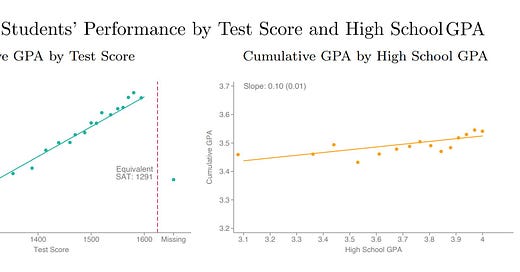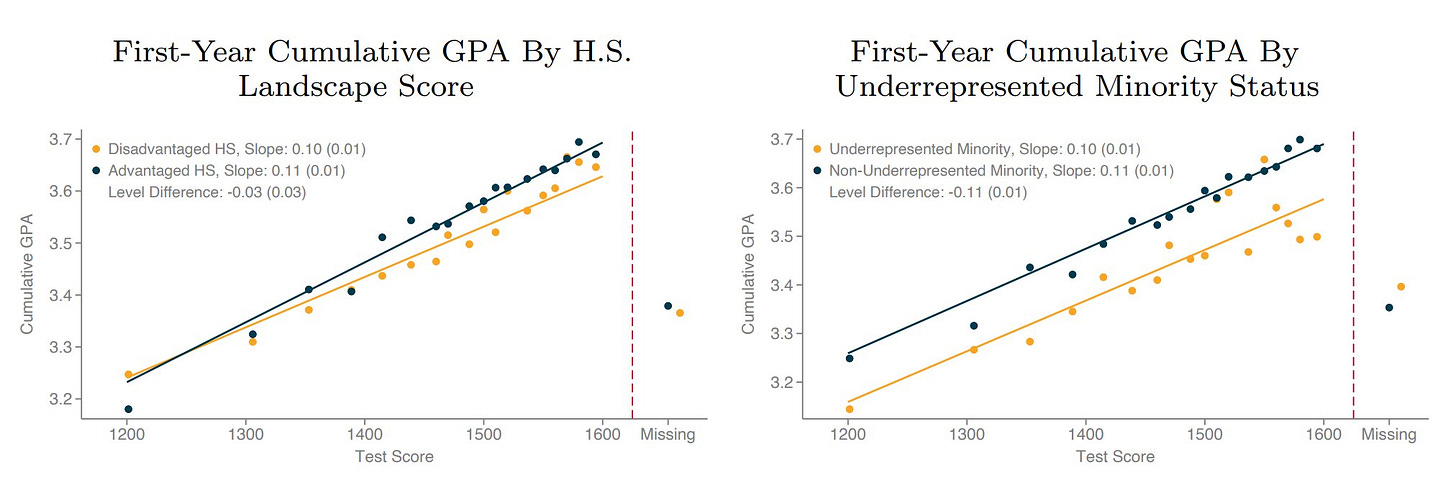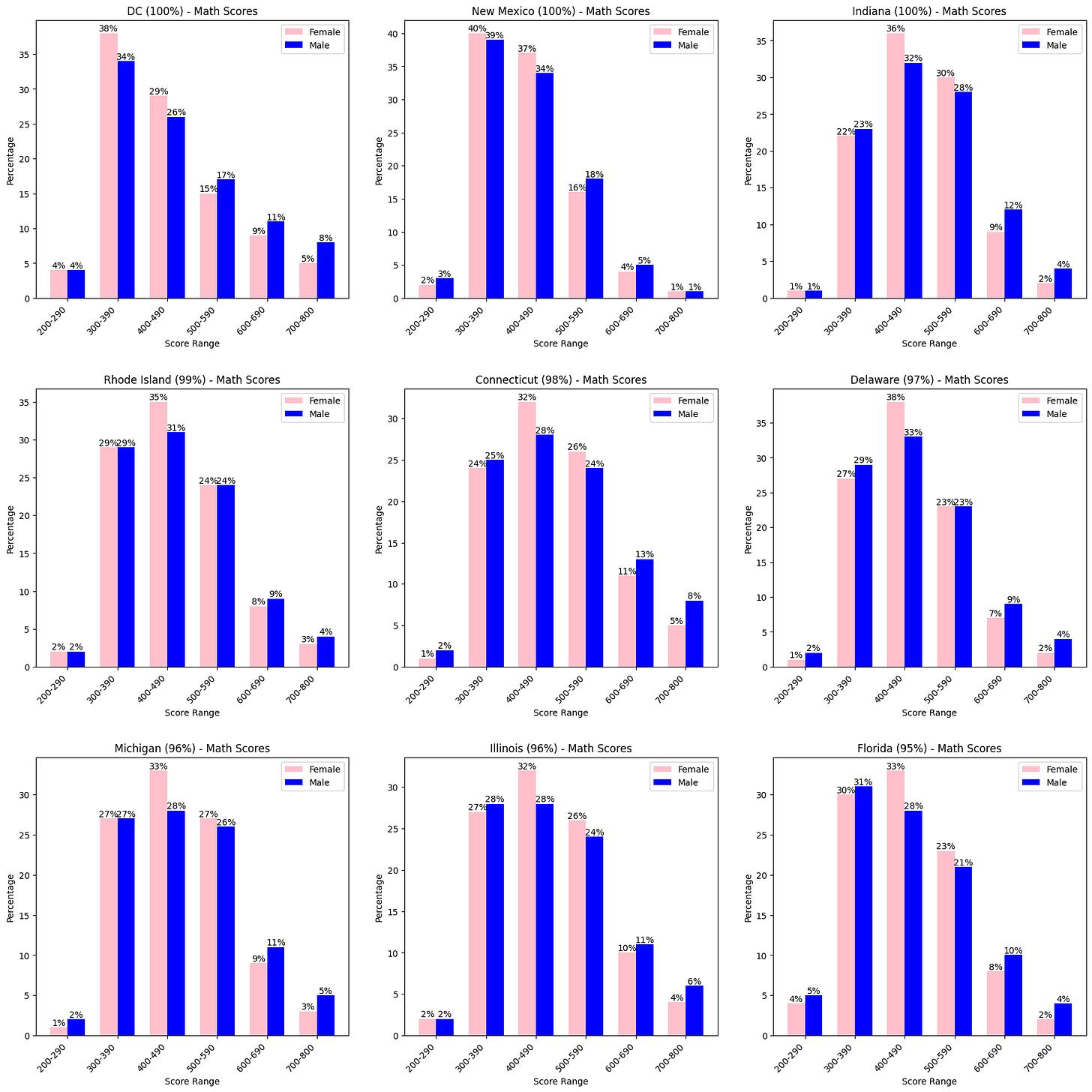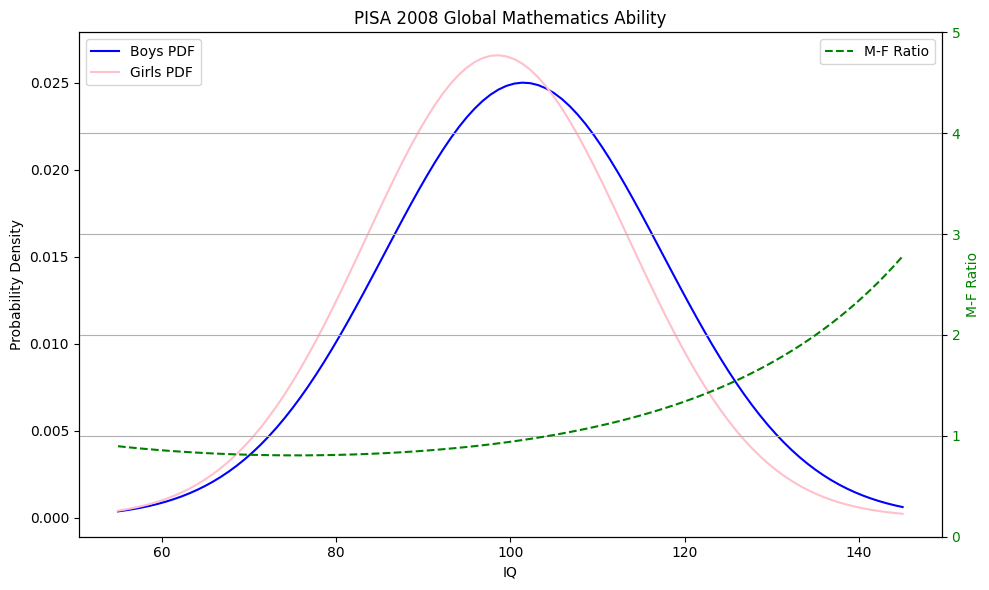Assessing boy's actual academic abilities in Math + Reading/Writing.
Looking at standardized tests, boys do not lack behind as much as belive and still do well in many subjects.
Note: Post is still being made, updates will be made later.
SAT Performance
Introduction
The SAT is a standardized test that is widely used for college admissions in the United States. It has two sections, a Math section and the Evidenced-Based Reading and Writing Section (ERW), that is further divided into a Reading sub-section and a Writing and Language sub-section. https://satsuite.collegeboard.org/sat/whats-on-the-test)
A lot of competitive colleges in the United States still utilize the SAT, or it’s well known alternative, the ACT. A research done comparing the first-year collegee grades from students at multiple Ivy-Plus colleges for the years between 2017 and 2022 and it was found that even amongst student with same high school grades, SAT and ACT scores have greater predictive power for academic success in college. (https://opportunityinsights.org/wp-content/uploads/2024/01/SAT_ACT_on_Grades.pdf)
General Results
971,405 (49.21%) Male and 990,760 (50.19%) Female students took the SAT Test in 2024, along with 11,726 (0.59) who were Another/No response.
Males had a higher mean score of 1029 as compared to 1018 of females. Males did better on the Math section by 18 points (514 vs 496) whereas Females did better better on the ERW section by 6 points (522 vs 516).
The benchmarks for the sections are defined as the folloiwng:
The SAT Math benchmark is the section score associated with a 75% chance of earning at least a C in first-semester, credit-bearing, college-level courses in algebra, statistics, precalculus, or calculus. (https://reports.collegeboard.org/media/pdf/2024-total-group-sat-suite-of-assessments-annual-report-ADA.pdf).
The SAT Evidence-Based Reading and Writing (ERW) benchmark is associated with a 75% chance of earning at least a C in first-semester, credit-bearing, college-level courses in history, literature, social science, or writing.(https://reports.collegeboard.org/media/pdf/2024-total-group-sat-suite-of-assessments-annual-report-ADA.pdf).
44% of the males met the SAT Math benchmark, whereas 38% of the females did. On the contrary 64% of the females met the SAT ERW benchmark as compared to 60% of the males. Suprisingly males were at the same time more likely to meet both benchmarks (42% vs 37%) and also to meet none (37% vs 35%)! This indicates a greater variation in male performance that we’ll observe later.
Greater Male Variation in Distribution
As can be seen here, males generally have a greater standard deviaion (or diversity) when it comes to their scores in all sections and sub-sections.
Even though males a had a higher mean when it comes to the total scores, males are overrepresented amongst the high scorers (1200+, 26% vs 22%) but also among the low scoresr (400-790, 19% vs 16%).
Here are what the general trends seem to be.
Males have a higher mean in Math, however a greater standard deviation. There is an overrepresentation of males among the high scorers (30-40, 27% vs 20%), however, males and females are equally represented amongst the lower scorers as well (10-19, 22% each).
Males and Females have similar means in Reading, however males have a greater standard deviation. While males are doing better just as well amongst the high scorers (28% vs 27%), males are overrepresented amongst the lower scorers (15% vs 11%).
In Writing and Language there is a greater struggle for boys. Girls clearly have a greater mean while boys a greater standard deviation. The top most boys (35-40) do as well as girls (8% each), however, amongst top scorers girls are bit more overreperesented (30-40) (26% vs 28%). It gets worse at the low scorers where boys are overrepresented highly (10-19) (19% vs 14%)
Now, a lot of people might say these samples are not representative, since a more girls take the SAT than boys, and a lot of the boys who wouldn’t take it are probably those who are doing badly in school, since boys are generally overrepresented those who drop out from high school or are the lowest scorers.
Better representative samples
Luckily there are many states where it is mandatory to take the SAT or otherwise 95%+ of the candidates took the SAT. We could utilize this to get a better idea of the differences between males and females, since it will include a lot of males in the lower tails that are excluded.
Math Scores
As can be seen, the same trend still follows in all of these states. Boys on average had a higher mean in Mathematics in all the states but had a greater standard deviation as well.
Boys are overrepresented amongst the top scorers in all states (600-800), but are also generally equally represented amongst the low scorers (200-390), though in some states there are a bit more males in the lowest scores (200-290), the low scorers are quite gender balanced..
Reading Scores
A trend of greater male standard deviationi s visible as well in all of these states.
DC is generally an exception since it’s the only state where boys outperform girls on the ERW as well, so we’ll ignore it.
Boys and girls are generally equally represented amongst the top scorers in Reading (30-40), however, when it comes to lowest scorers (10-19), boys are overrepresented in all the states (generally by about 5%).
Writing and Language Scores
In most states the top most boys are generally able to keep up with the girls in writing (35-40), however, girls are overrepresented in the top scorers (30-40).
Boys, however, are highly overrepresented in the lowest scorers (10-19) in all the states by an average of 6-8%.
Conclusion from SAT Results
It seems the same trend continues along all the states, boys generally have a slightly greater mean performance in Mathematics and a greater standard deviation, this leads to both an equal amount of boys and girls struggling but at the same time much more boys who are overachieving.
When it comes to the verbal ability, girls are doing better but boys have a greater standard deviation there as well. In reading, there is gender parity amongst high scorers (30-40), however, boys are overreprersented by an average of 5% amongst the low scorers. In writing and language there is more struggle with girls being overrepresented amongst the high scorers (30-40) (though amongst the top most 35-40 a lot of boys are able to keep up) boys are overrrepresented in
Since these are present in all states, it’s highly unlikely to be a resultant of socialization alone, since any possible socialization is going to vary across the different states as well.
It would be a good to see and compare if this is a global phenomena to know if it is rooted in biology.
Global Trend?
(Note: Being editted).
PISA 2022
Mathematics
Boys had a greater mean by 9 points in Mathematics,
Final Conclusion
Based on PISA 2008, 15 year old boys globally had a mean advantage of 0.10 standard deviations in Mathematics and the variance ratio between boys and girls was 1.13. For reading, globally, girls had a mean advantage of 0.3 standard deviations and the variance ratio was 1.15. The results have generally always been similar for PISA, so we can consider this a universal phenomena. (https://gwern.net/doc/iq/2008-machin.pdf)
Converting this to “IQ”, boys would have a mean “Math IQ” of 101.5 with STD=15.945 compared to 98.5 for girls with STD = 15
For reading, boys would have a mean “Reading IQ” of 97.8 with STD = 15.355 and girls would have a mean of 102.1 with STD = 14.318.
Higher variance of boys than girls in Mathematics and Reading Performance was present in almost all performances. The differences in variance were generally higher in countries which had higher levels of test score performances.
Final Statements
Since the phenomena of greater male variation in mental capabilities is present in virtually all countries, it is very likely to be a result of biology rather than socialization.
Differences in Mathematics and Reading abilities are also generally consistent across all the states in the United States as well as the world. In some countries the Mathematics gap is not there and in fact is in the favor of girls, however, even in those countries the top most scorers are predominantly male. Greater variability still exists regardless of mean.
It is also very likely that the overrepresentation of boys amongst the lowest scorers of reading and writing ability might be a result of boys being more likely to have speech and language development disorders as well.
My personal suggestion would be for sex segregated schooling so as to allow for the best possible development environment suited for boys and girls without compromising each other. Since boys lag behind verbally and generally find it tougher to sit still, the current classroom system is highly disadvantegeous to them.













